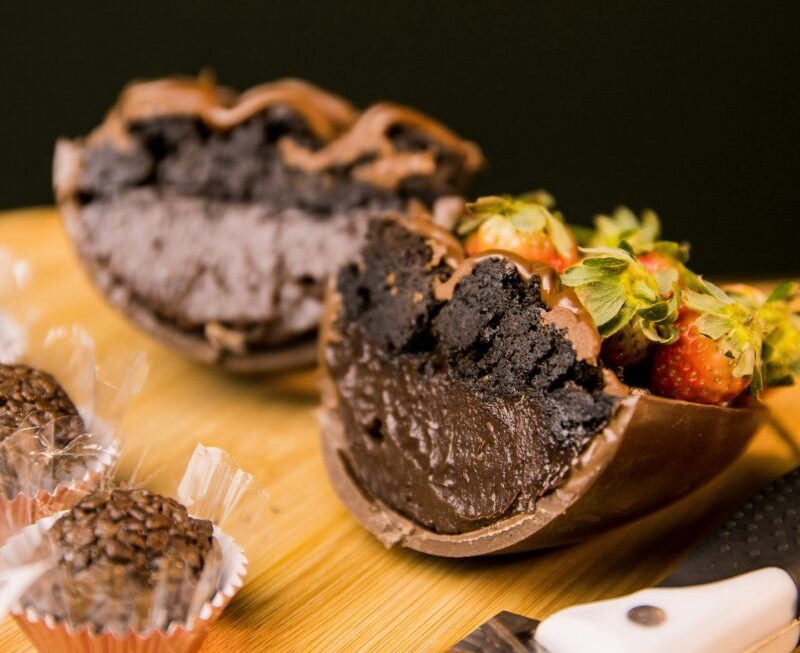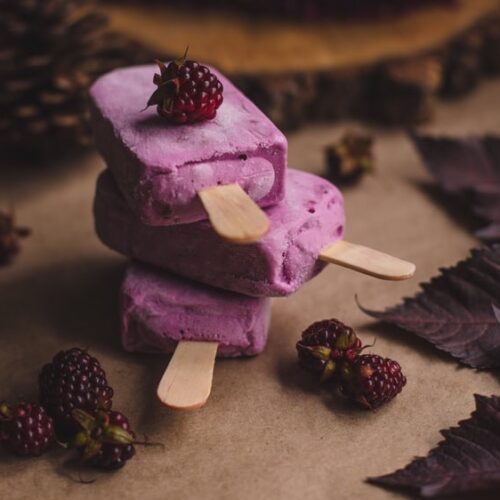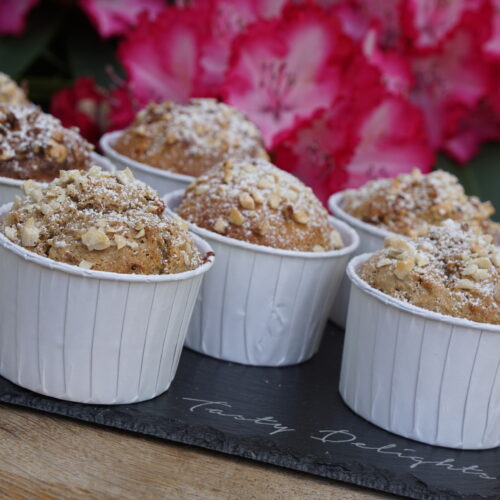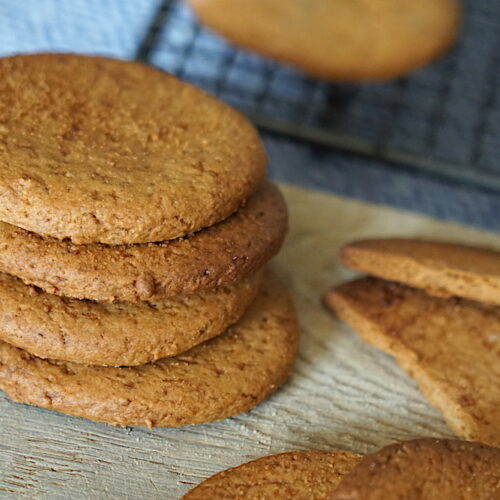Easter is a time of celebration, and for many, it involves indulging in delightful chocolate treats. For those following a vegan lifestyle or simply seeking healthier alternatives, homemade vegan Easter eggs offer a delicious and rewarding option. Crafting your own chocolate eggs allows for control over ingredients, ensuring they align with your dietary preferences and health goals.
Why Homemade Is Better Than Store-Bought
Creating homemade vegan Easter eggs provides several advantages over purchasing store-bought versions:
- Ingredient Control – By making your own chocolates, you can select high-quality, simple ingredients, avoiding artificial additives and excessive sugars often found in commercial products.
- Customisation – Homemade chocolates can be tailored to your taste preferences, allowing for creative combinations of flavours and fillings.
- Freshness – Freshly made chocolates often have superior taste and texture compared to mass-produced options that may have been stored for extended periods.
- Sustainability – Making chocolates at home reduces packaging waste, contributing to more environmentally friendly practices.
Understanding The Difference Between Vegan & Traditional Chocolate
Traditional chocolate typically contains dairy products, such as milk powder, to achieve a creamy texture. In contrast, vegan chocolate omits animal-derived ingredients, utilising plant-based alternatives to replicate the desired creaminess. Common substitutes include coconut milk, almond milk, or cashew butter. Additionally, vegan chocolates often use natural sweeteners like coconut sugar or maple syrup instead of refined sugars.
Did you also know that dark chocolate above 70% is vegan! So if you love, for example, Lindt dark chocolate, as long as it’s 70% or higher, you can eat it as a vegan.
Benefits Of Raw Cacao Powder & Cacao Butter
Raw Cacao Powder
- Rich in Antioxidants – Helps combat oxidative stress and inflammation.
- Boosts Mood – Contains compounds like theobromine and serotonin precursors that enhance mood and energy levels.
- High in Magnesium – Supports muscle function, nerve health, and heart health.
- Promotes Heart Health – Contains flavonoids that may lower blood pressure and improve circulation.
Cacao Butter
- Healthy Fats – Supports skin health and provides a smooth, creamy texture to chocolates.
- Nourishing for Skin – Often used in skincare for its hydrating and protective properties.
- Mild, Buttery Flavour – Enhances the texture and taste of homemade chocolates.
Essential Equipment For Making Vegan Easter Eggs
To embark on your easter chocolate-making journey, you may want to gather the following tools to make it a little easier:
- Double Boiler – Essential for gently melting chocolate without scorching. If unavailable, a heatproof bowl over a pot of simmering water serves as an effective substitute.
- Chocolate Moulds – Silicone molds in an egg shape are ideal for shaping your Easter eggs, available in various sizes to suit your preferences. Choose the size of your mould depending on what size eggs you want to create.
- Pastry Brush or Small Paint Brush – Useful for evenly coating moulds with melted chocolate.
- Piping Bag – Assists in filling chocolate shells with creams or other fillings.
- Baking Sheet – Provides a stable surface for placing filled moulds during setting.
- Parchment Paper – Prevents chocolates from sticking to surfaces.a
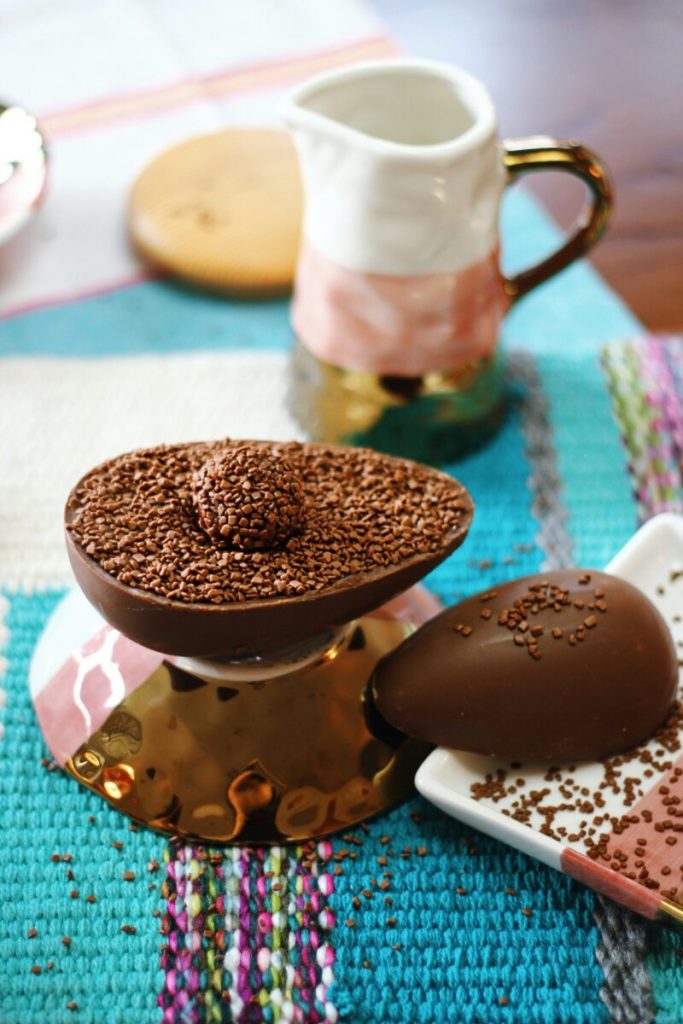
Healthy Vegan Easter Egg Recipes
1.Vegan Peanut Butter Eggs
Ingredients:
- 150g vegan chocolate chips
- 1/2 cup natural peanut butter
- 2 tablespoons coconut flour
- 2 tablespoons maple syrup
- Pinch of sea salt
Instructions:
- In a medium bowl, combine natural peanut butter, coconut flour, maple syrup, and a pinch of sea salt until a dough forms.
- If you don’t have an egg mold you can shape the mixture into small egg shapes and place them on a parchment paper-lined tray.
- Freeze the peanut butter eggs for about 15 minutes to firm up.
- Meanwhile, melt the vegan chocolate chips for a couple of minutes using a double boiler over low heat.
- Once melted, use a fork to dip each peanut butter egg into the chocolate, allowing excess chocolate to drip off.
- Place the coated eggs back on the tray and refrigerate until the chocolate sets.
2.Vegan Crème Eggs
Ingredients:
- 150g vegan chocolate chips, or dark chocolate chips
- 1/4 cup coconut butter (you can also use vegan butter, or coconut oil as an alternative)
- 2 tablespoons coconut milk
- 1 teaspoon vanilla extract
- 2 tablespoons powdered sugar
- Pinch of salt
- Pinch of turmeric (for colouring the centre)
Instructions:
- Melt the vegan chocolate chips using a double boiler over low heat.
- Using a pastry brush, coat the inside of your egg moulds with the melted chocolate.
- Place the moulds in the refrigerator to set.
- In a small bowl, mix coconut butter, coconut milk, vanilla extract, and powdered sugar until smooth.
- Divide the mixture, adding a pinch of turmeric to one portion to create the “yolk” (your sweet gooey white fondant filling replacement)
- Once the chocolate shells have set, one egg half at a time, fill them with the white filling and add a small amount of the yellow filling in the centre.
- Seal the eggs with a final layer of melted chocolate and refrigerate until firm.
You can now eat your vegan creme eggs! They are so much better than the original Cadbury creme eggs.
3.Raw Vegan Chocolate Eggs (Plain)
Ingredients:
- 1/2 cup raw cacao butter
- 1/4 cup raw cacao powder
- 2 tablespoons maple syrup
- 1 teaspoon vanilla extract
- Pinch of sea salt
(If you don’t want to use cacao butter and cacao powder, you can use 200 grams of vegan chocolate instead and take out the maple syrup).
Instructions:
- Melt the raw cacao butter using a double boiler over low heat.
- Once melted, whisk in raw cacao powder, maple syrup, vanilla extract, and a pinch of sea salt until smooth.
- Either pour or paint the liquid chocolate into your egg-shaped silicone moulds.
- Refrigerate until solidified.
- Once solid, carefully take each shell out of its mould and smooth down the edges.
- Melt a little extra chocolate and place around the rim of each shell and place the shells together, holding in place until the chocolate sets.
Storing Your Homemade Vegan Easter Eggs
Proper storage is key to maintaining the freshness of your vegan Easter chocolates:
- Room Temperature – If your kitchen is cool, store chocolates in an airtight container for up to one week.
- Refrigeration – Keeps chocolates fresh for up to two weeks.
- Freezing – For long-term storage, freeze chocolates in a sealed container for up to three months. Thaw at room temperature before consuming.
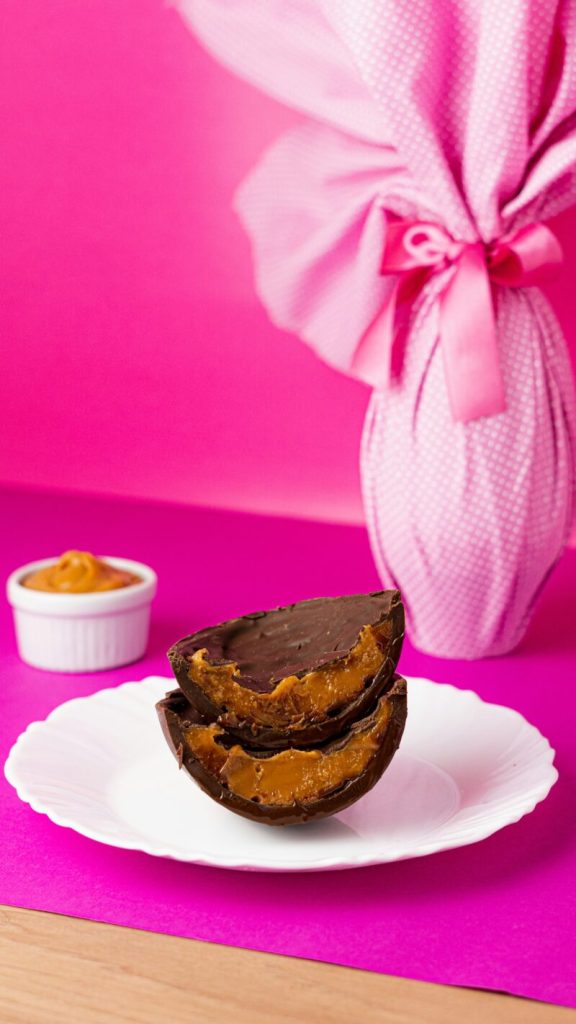
Turn Your Homemade Easter Eggs Into Beautiful Gifts
Homemade vegan Easter eggs make thoughtful and personal gifts. Here’s how you can present them beautifully:
- Use Decorative Boxes or Jars – Place the chocolates in a gift box or glass jar lined with tissue paper.
- Wrap in Foil or Cellophane – Wrap individual eggs in foil or colourful cellophane tied with a ribbon.
- Create Easter Baskets – Arrange the chocolates in a basket with shredded paper or eco-friendly stuffing.
- Personalised Gift Tags – Attach handwritten notes or labels with the recipient’s name for a special touch.
- Handmade Chocolate Assortments – Mix and match different fillings for variety and surprise.
These homemade Easter chocolates make for a delightful, heartfelt present that friends and family will truly appreciate.
Making homemade vegan Easter eggs is not only a fun activity for all ages but also allows for beautifully customised gifts. Whether you enjoy them yourself or present them in vegan Easter baskets, these delightful treats are sure to impress.
Try making your own chocolate this Easter and enjoy the satisfaction of creating delicious, homemade treats!
Would you try making any of these homemade vegan easter eggs recipes?
FAQ’
1.Can I use any type of chocolate for these recipes? Yes, but ensure but for vegan easter eggs, do make sure that it is vegan chocolate, free from dairy and animal-derived ingredients.
2.Can I substitute maple syrup with another sweetener? Yes, you can use agave syrup, honey or coconut sugar as alternatives.
3.How do I prevent my chocolate from seizing? Always melt your chocolate gently using a double boiler and avoid adding water.
4.What if I don’t have an egg mould? You can use small silicone cupcake moulds or shape the fillings by hand and coat them in chocolate.
5.How long do homemade vegan Easter eggs last? Stored properly, they last up to one week at room temperature, two weeks in the fridge, and three months in the freezer.

